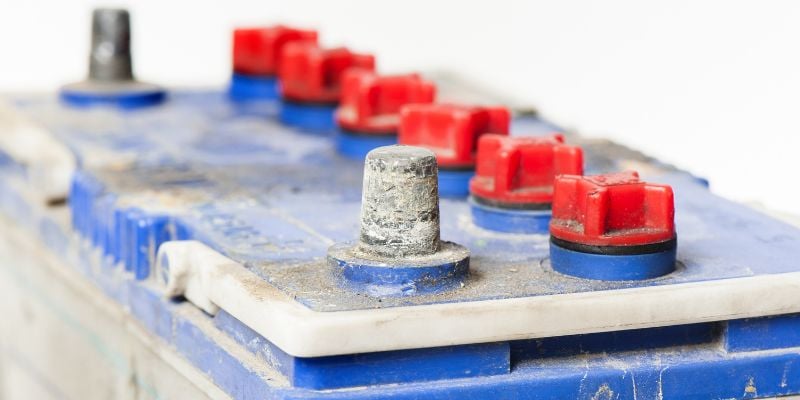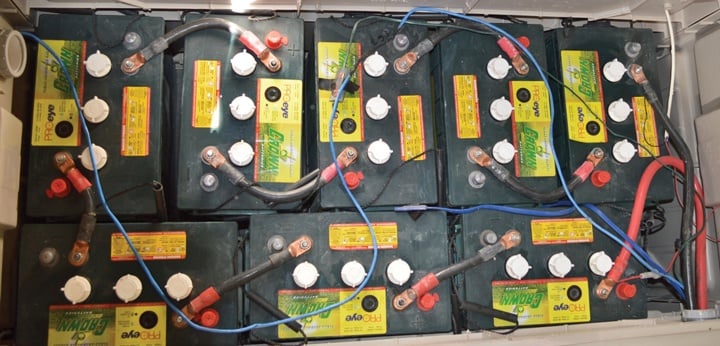Batteries are essential for powering a wide range of vehicles and applications that require dependable power. However, batteries can develop sulfation over time, significantly impacting their performance and lifespan. In this blog, we will explore how to determine if your vehicle's battery is sulfated and discuss preventive measures and treatment options.
What is a Sulfated Battery?
Battery sulfation is a condition that can affect the performance of lead-acid batteries. It occurs when lead sulfate crystals accumulate on battery plates, typically when a battery is stored or cycled in a partially discharged state of charge. Sulfated batteries resist normal recharge service and usually lose capacity over time. The root cause of sulfation is usually traced to ineffective battery charging service, although additional factors such as short-cycling, storing batteries in a partial state of discharge, and operation in high temperature environments will open the door to this problem.
Signs & Symptoms of A Sulfated Battery
Identifying the indications of sulfation is crucial to prevent further damage to your battery. Here are some common indicators of a sulfated battery:
- Diminished battery performance: One of the primary indications of sulfation is a decrease in battery discharge performance. For example, battery users may experience difficulty starting or powering applications shortly after installation, with unexpected reductions in the battery's capacity.
- Slow or incomplete charging: Sulfation affects the battery's ability to fully recharge. Sulfated battery plates create significant internal resistance within the battery, and a sure indication of this condition is when your battery takes longer than usual to reach a full charge.
- Low electrolyte levels: Sulfated batteries restrict the free flow of current through the battery’s plates. This is indicated by increased operating temperatures that can cause a depletion of the battery’s electrolyte. Battery electrolyte is a mixture of water and sulfuric acid that facilitates the battery's chemical reactions. If you notice that the levels are low or have significantly decreased, it could indicate sulfation.
- Swollen or distorted battery case: Sulfation also causes an accumulation of lead sulfate crystals on the battery's plates, leading to increased heat generation during charging and discharging cycles. Over time, this excess heat can make the battery cases swollen or distorted. A distorted battery case is a visual clue that sulfation may be present.
- Increased internal resistance: Sulfation causes the formation of sulfate crystals on the battery plates, which creates a non-conductive barrier of material r between the active material and the grid structure of plates. This barrier decreases the free flow of current through the battery, which increases the battery's internal resistance and reduces power output. You may notice that the battery struggles to deliver sufficient power to electrical devices or experiences voltage drops under load.
Preventing Battery Sulfation
The adage, “prevention is the best cure,” holds regarding sulfation. It is crucial to adopt a regular battery maintenance routine. Mitigating sulfation risk involves:
- Adhering to proper charging techniques.
- Steering clear of over-discharging batteries, or storing batteries in a partial state of discharge.
- Proactively employing periodic battery maintenance practices. And being aware of indications of sulfation.
Here are some other ways to prevent battery sulfation:
- Keep Batteries Clean and Dry: Dirt, moisture, and corrosion contribute to sulfation. Regularly inspect your batteries and clean any debris or corrosion on the terminals using a battery cleaning solution and a wire brush. Additionally, ensure that batteries are stored dry to prevent moisture-related issues.
- Store Batteries Properly: If you need to store batteries for an extended period, it's essential to store them correctly to prevent sulfation. Fully charge the batteries before storage, and periodically recharge them if the storage duration is prolonged. Keep the batteries in a cool, dry location away from direct sunlight and extreme temperatures.
- Charge Correctly: To prevent battery sulfation, regularly charge your battery. Use a battery maintainer or trickle charger if it's not used frequently. This prevents sulfate from forming on the plates. Use the correct method and equipment when charging, and follow the manufacturer's instructions.
Battery Maintenance Tips
Batteries are a fundamental component of our daily lives, providing energy for many resources. However, similar to other machinery, they necessitate regular upkeep to ensure efficient operation.
Here are a few tips to help you keep your battery healthy:
- Practice safety - first and always. Always wear personal protective equipment such as protective face shields and gloves when working or or around batteries, and remove any jewelry or watches that could inadvertently make contact with batteries during service work.
- Clean the battery terminals regularly. Corrosion on the terminals can cause a loss of power and make it difficult to start your vehicle. Use a wire brush and baking soda to clean the terminals, then coat them with a thin layer of petroleum jelly.
- Check the electrolyte levels in flooded batteries. If the electrolyte levels are low, the battery cannot be charged effectively. Use a hydrometer to check the electrolyte levels, and add distilled water if necessary.
- Ensure proper ventilation around the battery. Batteries produce hydrogen gas, which is explosive . Always verify that the battery vents on your battery are properly secured to the battery before and after battery maintenance cycles, and ensure adequate ventilation around the battery to prevent a buildup of gas.
- Keep batteries charged during storage periods. If you don't plan on using a battery for an extended period, such as over the winter, make provisions to have the battery charged when its state of charge falls to 50% capacity. This will help prevent sulfation, a process that can damage the battery.
By identifying the signs and symptoms, conducting regular tests, and implementing preventive measures, you can extend your battery's lifespan and avoid costly replacements. Remember, proactive battery maintenance is critical to preventing and addressing sulfation promptly.
So, don't wait until your battery is completely depleted or fails unexpectedly. Take action now to keep your batteries in peak condition and enjoy reliable power whenever needed.











